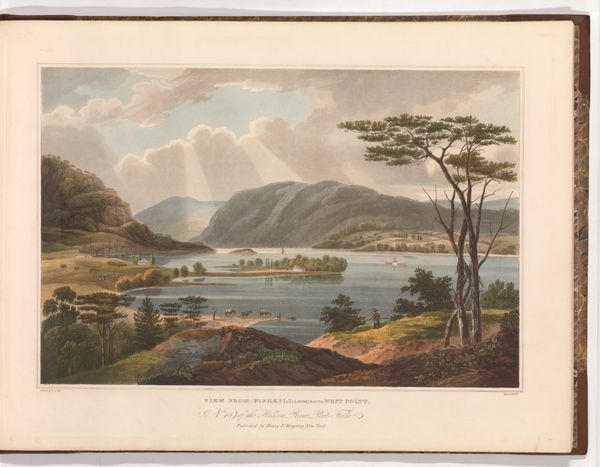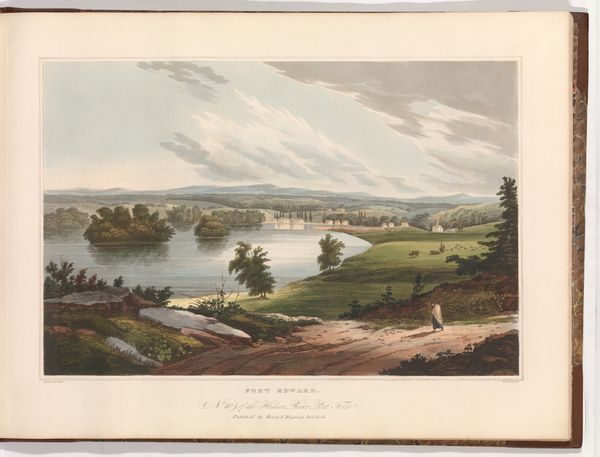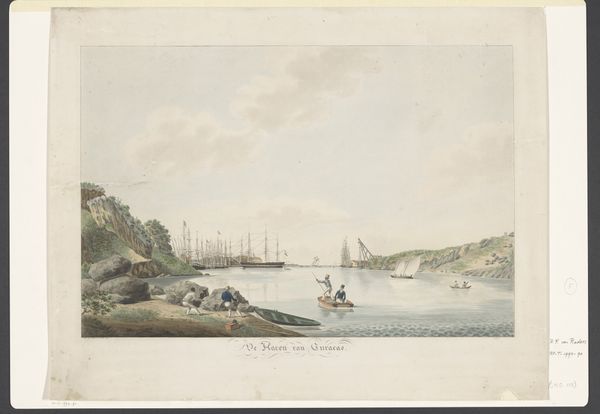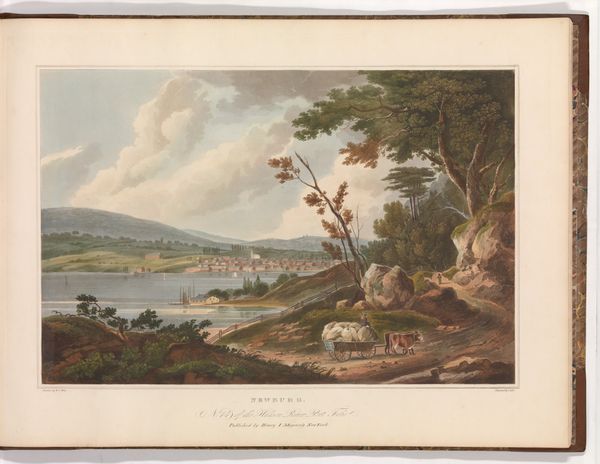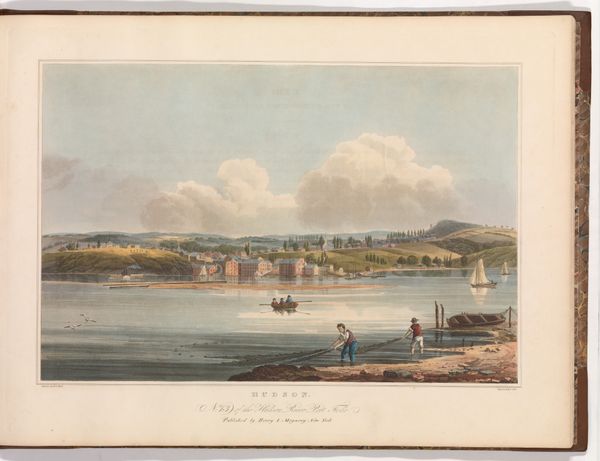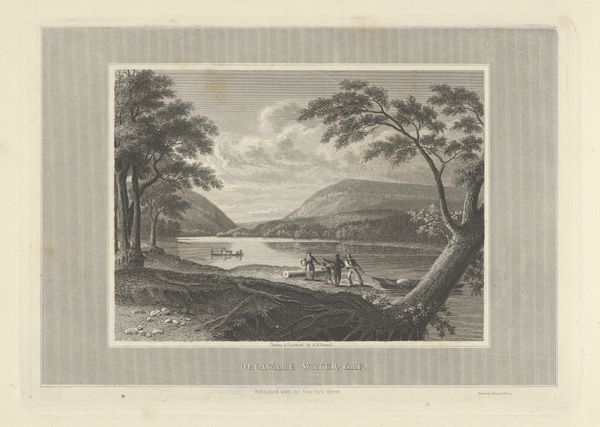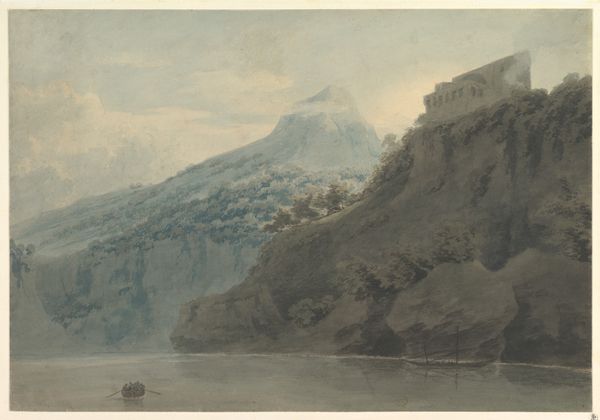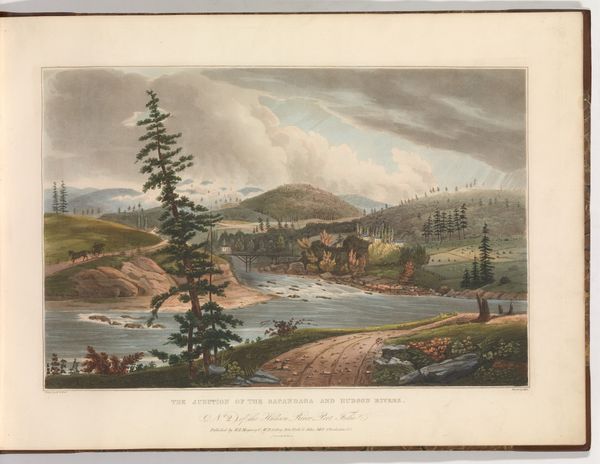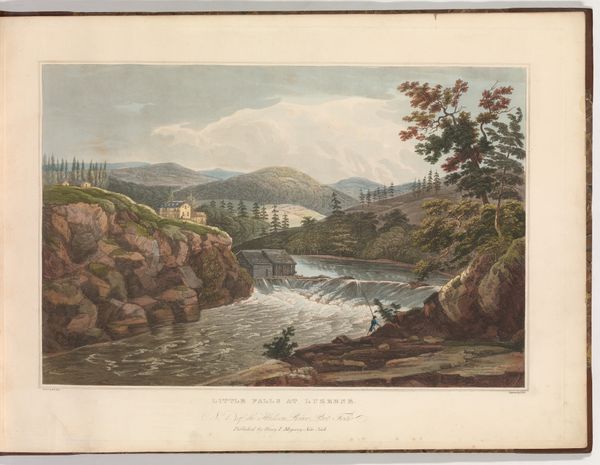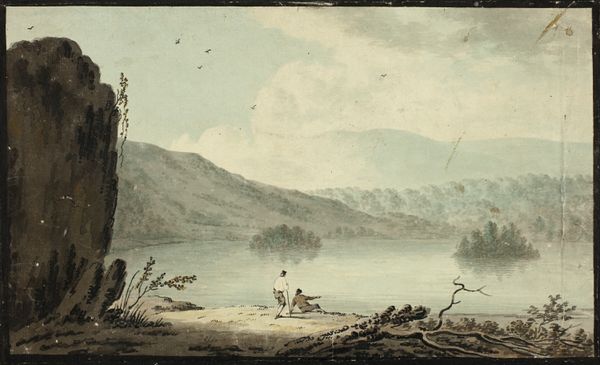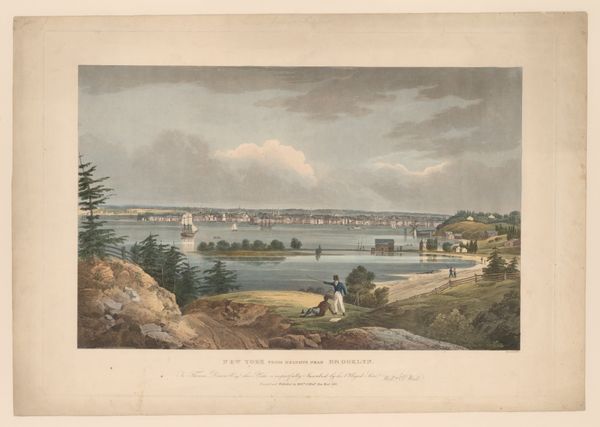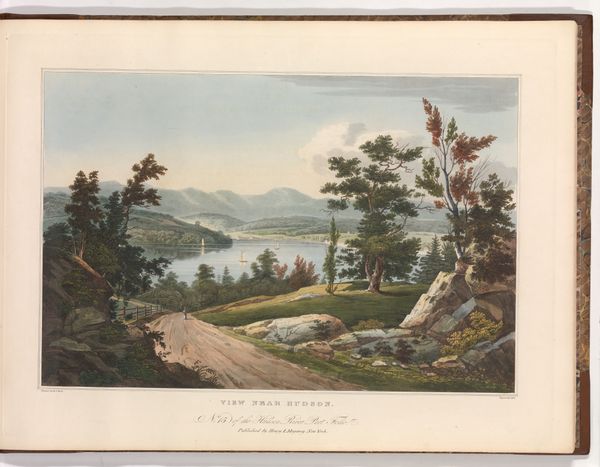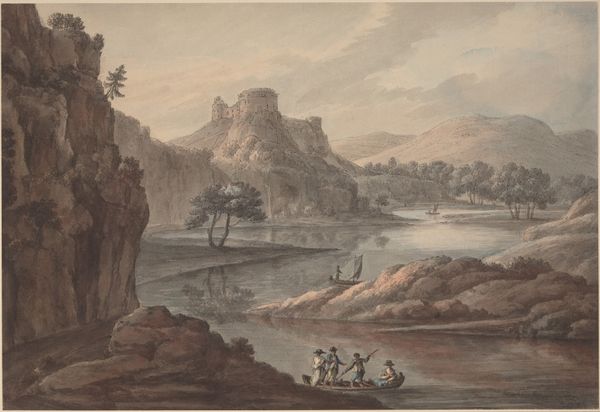
View Near Fort Montgomery (No. 22 (later changed to No. 18) of The Hudson River Portfolio) 1822
0:00
0:00
Dimensions: Image: 14 1/16 x 20 3/16 in. (35.7 x 51.3 cm) Sheet: 19 x 24 1/2 in. (48.3 x 62.2 cm)
Copyright: Public Domain
Curator: Ah, a captivating slice of the early 19th century! This is "View Near Fort Montgomery," originally titled No. 22 but later changed to No. 18, from "The Hudson River Portfolio," created around 1822. John Hill rendered this beauty using etching and watercolor. Editor: Immediately, I’m struck by this serene stillness—it's a masterclass in capturing the vast, reflective silence of a pre-industrial landscape, right? Almost meditative in its quiet grandeur, but… who are these figures? Curator: That’s precisely where things get interesting. What we see represented here isn’t necessarily *real,* as in untouched. It reflects a particular vision of nature being civilized and made commercially viable, doesn’t it? Editor: Of course! That little raft with people aboard highlights how land gets valued only when people do things on it! It really encapsulates the tension between an untouched "wilderness" and burgeoning industrial activity. It is also clearly a eurocentric depiction. Who gets to do things on this land, according to Hill? And who gets excluded? Curator: You've hit upon it. These scenes become a form of promoting and almost “selling” the landscape as both beautiful and profitable. Plus, you know, influencing policy while generating investment? The image, on a basic level, works because he skillfully used light, texture, and compositional structure to build that emotional appeal. The whole hazy effect? Magnificent! Editor: It speaks to broader implications, right? This notion of "progress," this relentless drive to conquer and convert, has very real impacts for marginalized communities that have traditionally inhabited or have a special tie with this region. That quietness you initially perceived? Actually, that's because somebody or something has already been violently removed! I guess beauty can be pretty deceiving... Curator: You are spot on! Hill and his peers painted this world as it could be and it's no accident who they have featured here, engaging in these views. Editor: So while Hill's artwork on the surface might be of this harmonious balance, we can interrogate this notion. What are we losing in our collective quest to create the beautiful, perfect landscape? It is certainly worth remembering that landscapes, or at least representations of them, were—and still are—almost never innocent!
Comments
No comments
Be the first to comment and join the conversation on the ultimate creative platform.
